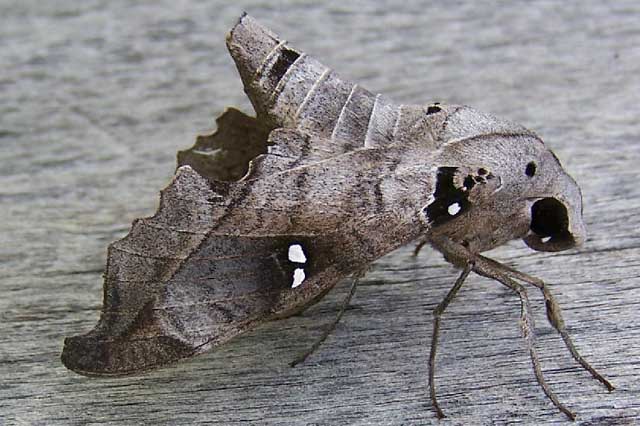
Madoryx oiclus, Paraguay, PYBIO
This site has been created by Bill Oehlke.
Comments, suggestions and/or additional information are welcomed by Bill.
TAXONOMY:
Family: Sphingidae, Latreille, 1802 |
|
|
Updated as per http://www.pybio.org/MACROGLOSSINAE.htm (Paraguay), November 2007 Updated and per personal communication with Andres Oscar Contreras (Pilar, Neembucu, Paraguay); May 2009 Updated as per personal communication with Ezequiel Bustos (Aguas Blancas, Salta, Argentina, 405m); December 2009 Updated as per AN ANNOTATED CHECKLIST OF THE SPHINGIDAE OF BOLIVIA, December 2009 Updated as per CATE Sphingidae (Trinidad and Tabago, Costa Rica, Suriname, Brazil, Ecuador, Argentina); May 11, 2011 Updated as per personal communication with Ben Trott (Playa del Carmen, Quintana Roo, Mexico); April 10, 2012 Updated as per personal communication with Ezequiel Bustos (Río Pilcomayo National Park, Formosa Province, Argentina; May 20, 2011); May 14, 2012 Updated as per personal communication with Sergio D. Ríos Díaz in CATÁLOGO DE LOS SPHINGIDAE (INSECTA: LEPIDOPTERA) DEPOSITADOS EN EL MUSEO NACIONAL DE HISTORIA NATURAL DEL PARAGUAY; sent to me in July 2014 by Sergio D. Ríos Díaz. Updated as per personal communication with Joanna Rodriguez Ramirez (Misiones; Argentina), January 21, 2015 Updated as per personal communication with Ezequiel Bustos (Shilap revta. lepid. 43 (172) diciembre, 2015, 615-631 eISSN 2340-4078 ISSN 0300-5267), January 4, 2016 Updated as per personal communication with Lucius Rabello Vasconcellos (Rio de Janeiro, Rio de Janeiro, Brazil, June 3, 2019), June 4, 2019 |

This site has been created by Bill Oehlke.
Comments, suggestions and/or additional information are welcomed by Bill.
TAXONOMY:
Family: Sphingidae, Latreille, 1802 |
It is also recorded in
Paraguay: Guaira; Canindeyu;
Alto Paraguay, Presidente Hayes, Concepcion, San Pedro, Cordillera,
Paraguari, Caaguazu and Alto Parana and Neembucu (AOC); and
Argentina: Salta (405m EB; 701m); Jujuy; Tucuman; Formosa; Misiones (JRR) and
Bolivia: Santa Cruz;
Brazil: Para, Rio de Janeiro (LRV) and southeastern Brazil.
I suspect it also flies in Panama, Colombia and Guyana.
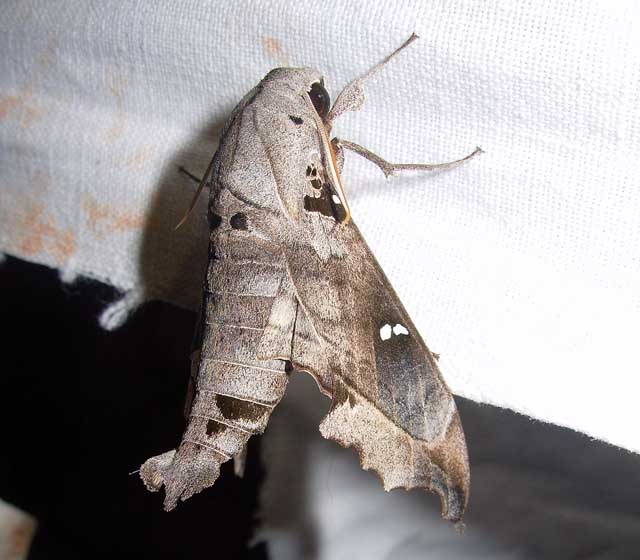
Madoryx oiclus, Río Pilcomayo National Park, Formosa Province, Argentina;
May 20, 2011, courtesy of Ezequiel Osvaldo Núñez Bustos.
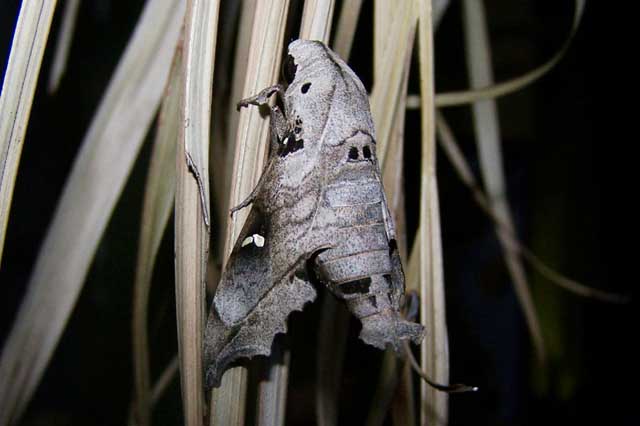
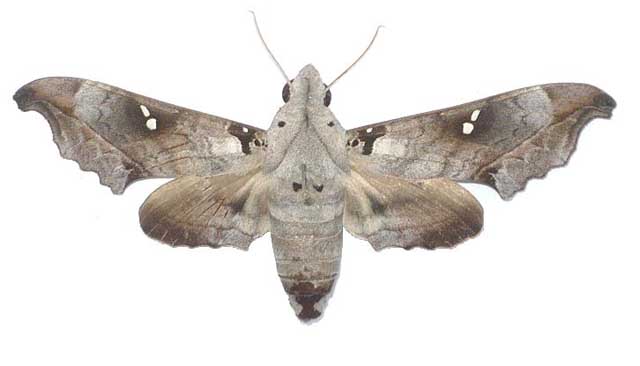
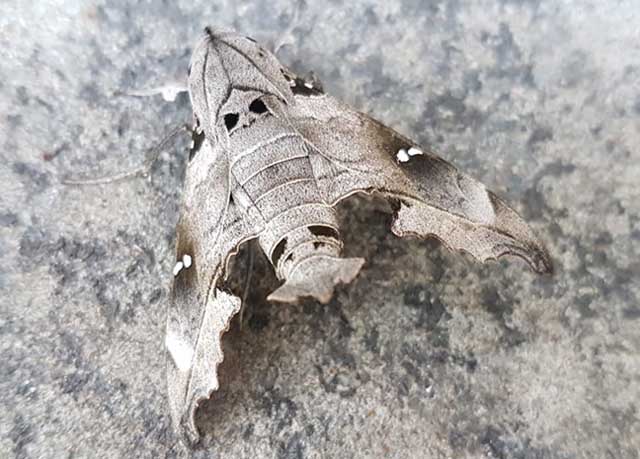
Madoryx oiclus oiclus, Rio de Janeiro, Rio de Janeiro, Brazil,
June 3, 2019, Lucius Rabello Vasconcellos.
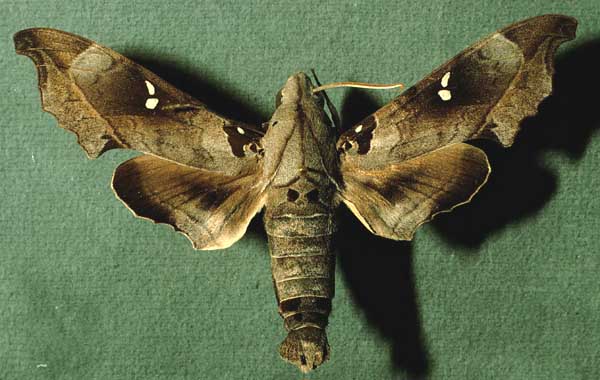
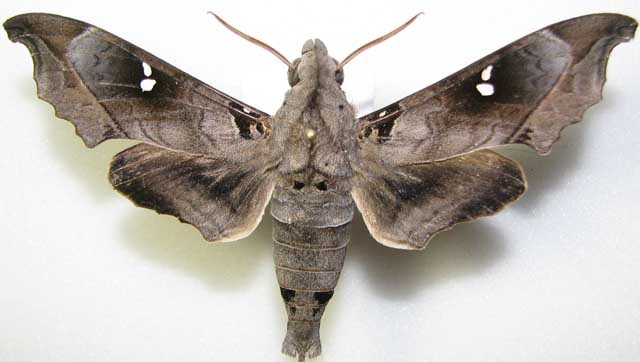
Madoryx oiclus 76mm, Cozumel Island, Mexico,
December, 2014, courtesy of Bedros Orchanian, id by Bill Oehlke
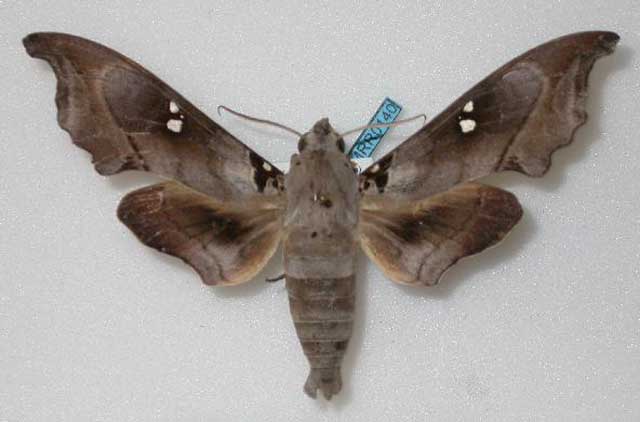
Madoryx oiclus jamaicensis, 96mm, Jamaica,
Creative Commons, SNSB.
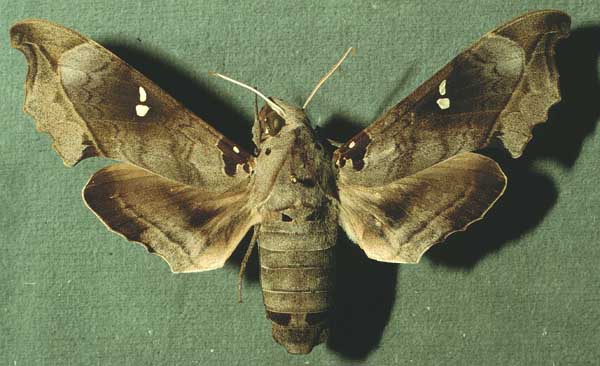
EGGS, LARVAE, PUPAE:Larvae feed on Rehdera trinervis and Crescentia alata and spin heavy cocoons.The last instar is cream colored with dark brown and black mottling on back and sides. There are two black eye spots on the sides of thorax, giving the appearance of a snake's head. When resting larvae look like a huge inchworm. |
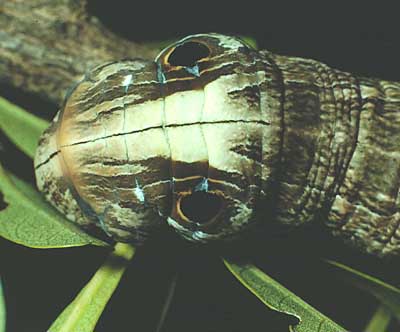 |
The cocoon is dark rust brown and often incorporates leavesThe cocoon is very sturdy and the pupa has a cremaster firmly attached to silk. There are three creamy orange bands on the abdomen. Moths eclose within three weeks of pupation. All images from Costa Rica, courtesy of Dan Janzen. |
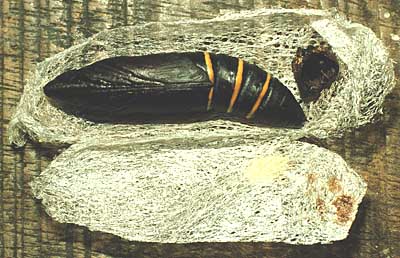 |
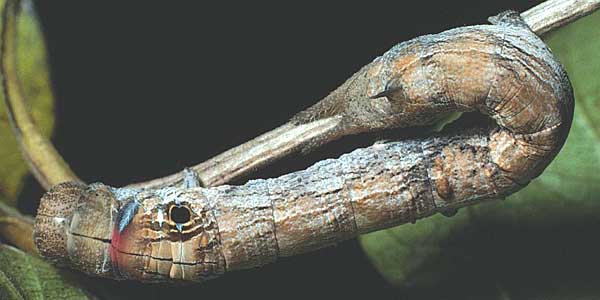
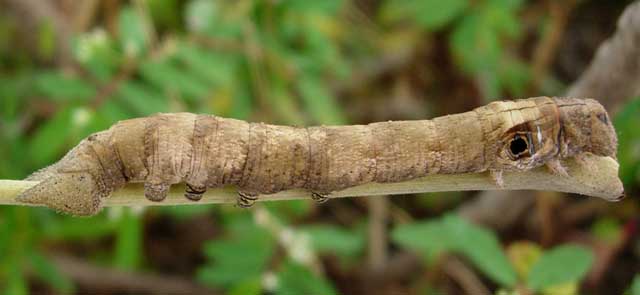
Madoryx oiclus early fifth instar, Playa del Carmen, Quintana Roo, Mexico,
courtesy of Ben Trott.
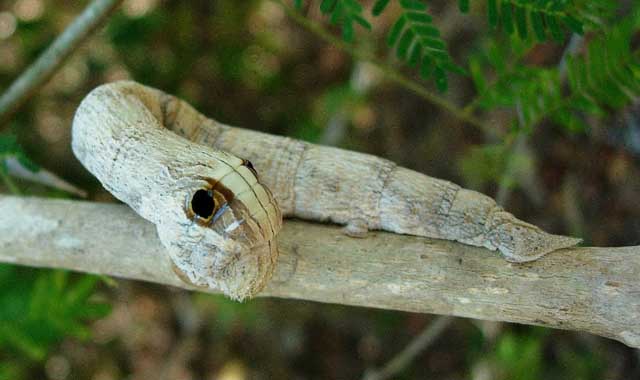
Madoryx oiclus mature fifth instar in defense position,
Playa del Carmen, Quintana Roo, Mexico,
courtesy of Ben Trott.
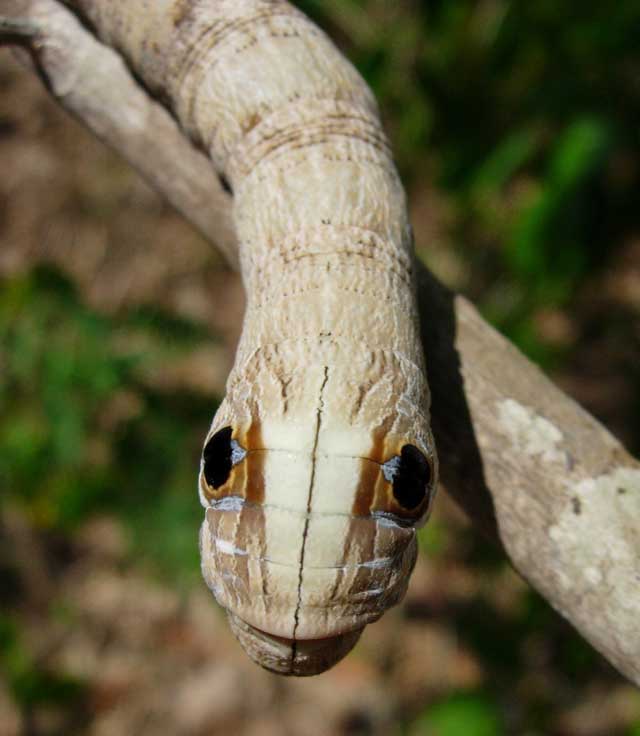
Madoryx oiclus mature fifth instar in defense position,
Playa del Carmen, Quintana Roo, Mexico,
courtesy of Ben Trott.
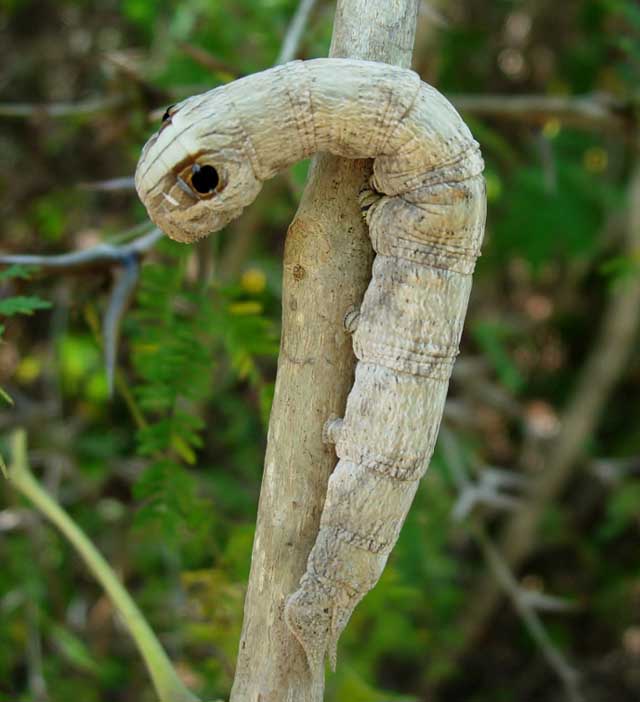
Madoryx oiclus mature fifth instar in defense position,
Playa del Carmen, Quintana Roo, Mexico,
courtesy of Ben Trott.
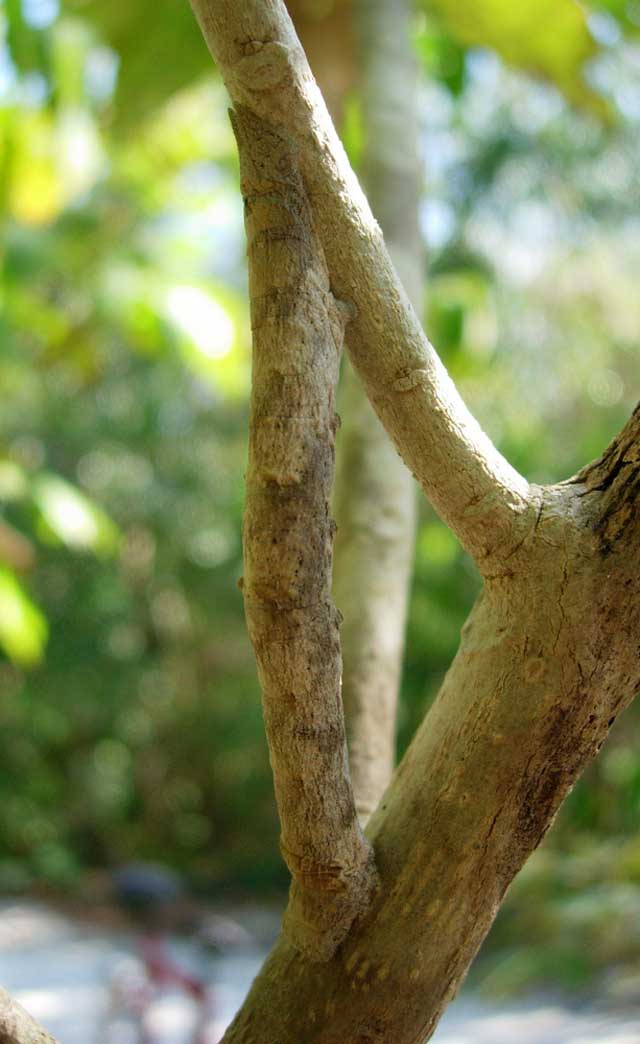
Madoryx oiclus mature fifth instar in typical resting position,
Playa del Carmen, Quintana Roo, Mexico,
courtesy of Ben Trott.
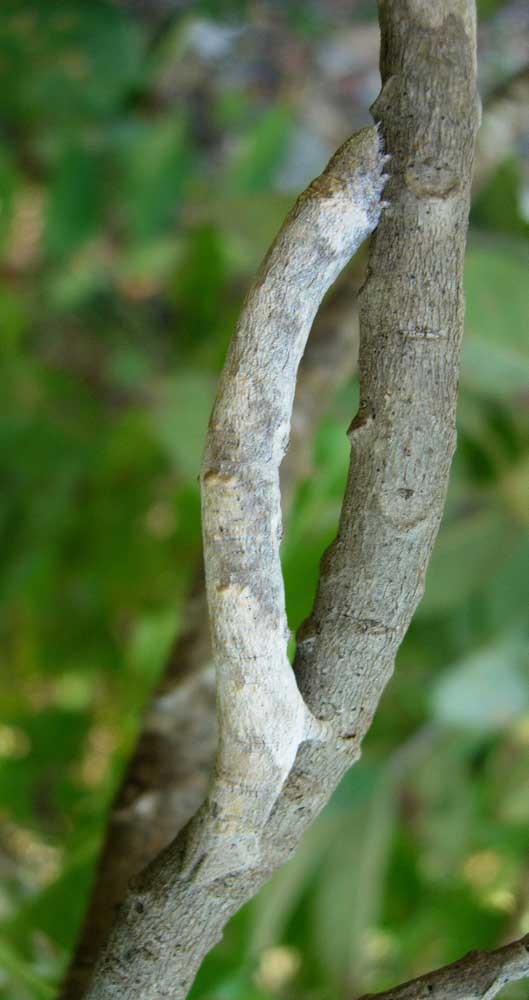
Madoryx oiclus mature fifth instar in typical resting position,
Playa del Carmen, Quintana Roo, Mexico,
courtesy of Ben Trott.
Return to Sphingidae Index
Return to Dilophonotini Tribe
Ezequiel Bustos image:
Colección de Lepidoptera Proyecto DNA Barcodes Lepidoptera Argentina
Museo Argentino de Ciencias Naturales ¨Bernandino Rivadavia¨ (MACN)
Av. Angel Gallardo 470 (1405)
Ciudad de Buenos Aires
Argentina
Use your browser "Back" button to return to the previous page.
This page is brought to you by Bill Oehlke and the WLSS. Pages are on space rented from Bizland. If you would like to become a "Patron of the Sphingidae Site", contact Bill.
Please send sightings/images to Bill. I will do my best to respond to requests for identification help.
Enjoy one of nature's wonderments: Live Saturniidae (Giant Silkmoth) cocoons.
 Show appreciation for this site by clicking on flashing butterfly to the left. The link will take you to a page with links to many insect sites. |